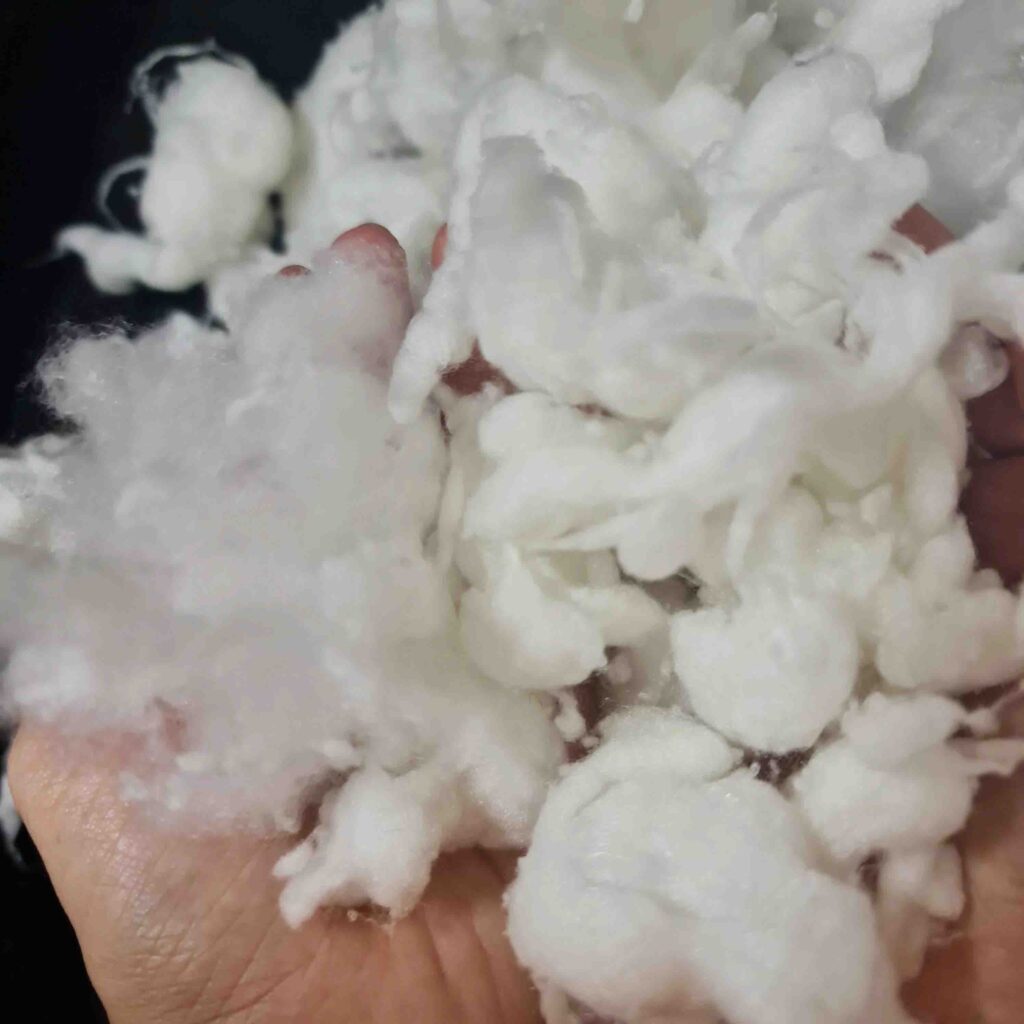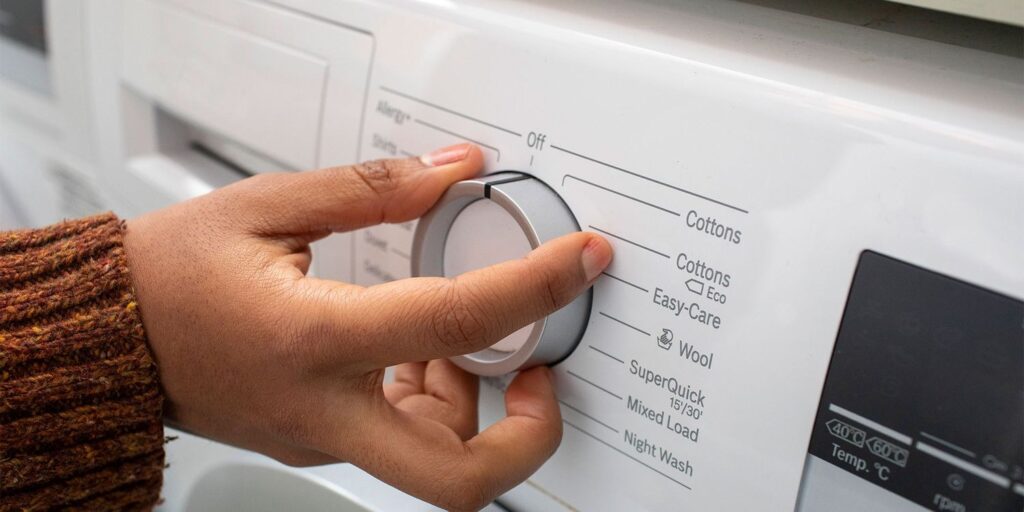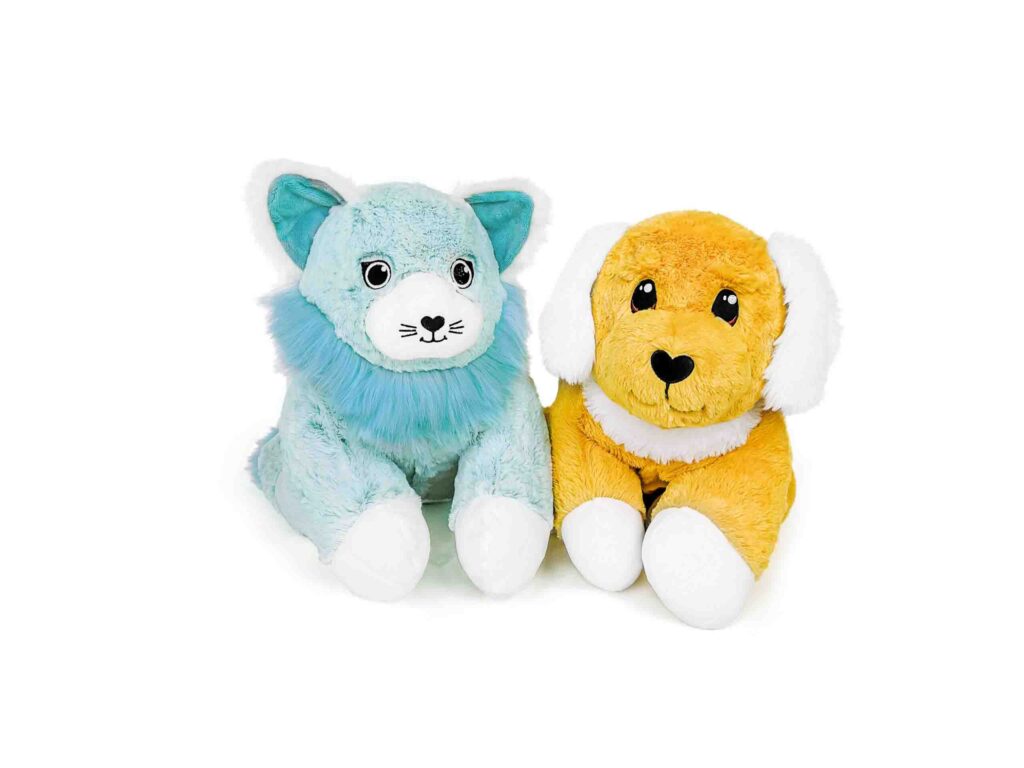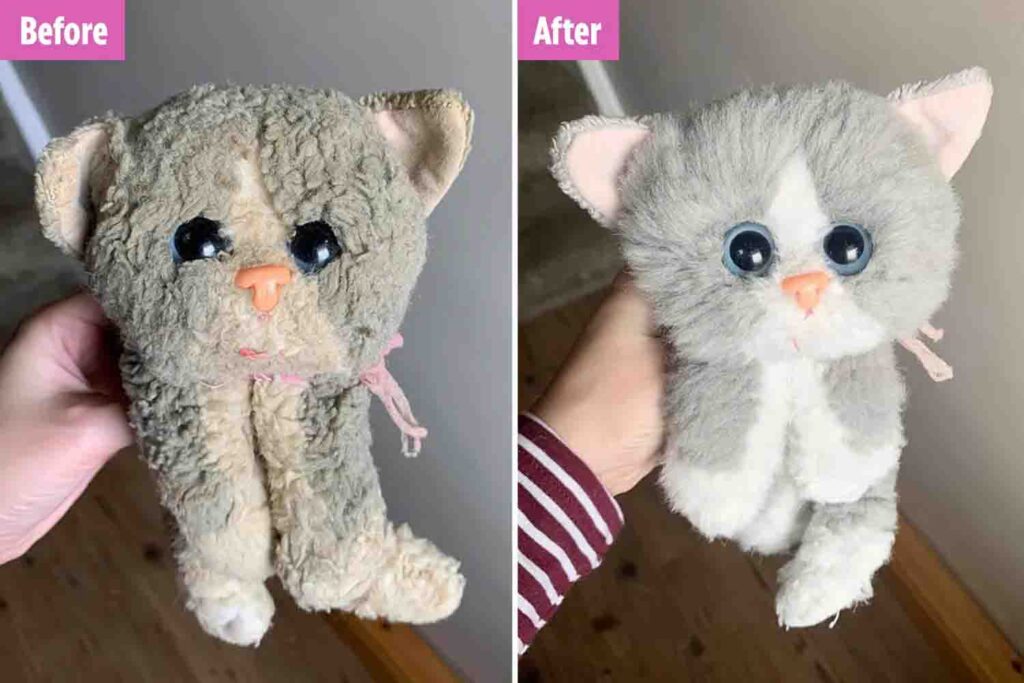Stuffed animals aren’t just toys — they’re cherished companions that hold sentimental value and comfort us through all stages of life. But over time, many people notice their plush friends losing that soft, fluffy appeal, turning flat and lifeless. Why does this happen, and more importantly, how can you restore that cozy fluffiness? This guide provides clear, actionable answers to those questions, offering both quick fixes and deep insights into the factors affecting plush fluff. Whether you’re a parent wanting to revive a child’s favorite teddy bear or a collector preserving valuable plush, understanding fluff loss and restoration methods can bring your stuffed animals back to life.
Stuffed animals lose fluffiness due to material breakdown, frequent use, improper washing, and compression during storage. Restoring fluffiness involves gentle cleaning, reshaping techniques, and sometimes re-stuffing with high-quality materials. Proper care preserves softness and extends the life of your plush companions.
Imagine a little girl clutching her once-fluffy bunny, now sad and flattened — what if you could bring it back to its original cuddly self? Keep reading to discover expert tips, DIY tricks, and professional insights that will help you make any stuffed animal fluffier and more lovable again.
1. What Causes Stuffed Animals to Lose Their Fluff Over Time?

Stuffed animals lose fluff mainly because stuffing fibers compress, shift, or break down, and surface fabrics mat from use and washing.
Material Breakdown and Fiber Compression
Over time, the polyester or cotton fibers inside plush toys get compressed through hugging, squeezing, and general play. This reduces the volume inside, making the toy feel flat. Lower-quality stuffing materials tend to break down faster, losing resilience.
Effect of Frequent Use and Handling
Constant handling causes the fibers to clump or shift unevenly. Kids’ rough play, pet interaction, and even sleeping with the toy increase wear and tear, accelerating fluff loss.
Impact of Improper Washing
Machine washing without proper care can damage both the stuffing and the outer fabric. Water and agitation cause fiber clumping and matting, while heat from dryers can worsen fiber collapse.
Storage and Environmental Factors
Storing plush toys under heavy items or in humid environments leads to flattening and fabric deterioration. Moisture weakens fibers, and compression from tight spaces squashes the stuffing.
Fabric Wear and Pilling
Fabrics with shorter fibers or lower quality tend to pill and matt, which reduces softness on the surface, making the toy feel less fluffy even if the stuffing is intact.
By understanding these factors, owners can better prevent fluff loss and choose restoration methods that suit their plush’s specific condition.
| Cause | Explanation | Impact on Fluffiness |
|---|---|---|
| Material Breakdown and Fiber Compression | Polyester or cotton fibers compress over time due to hugging, squeezing, and play. Lower-quality stuffing breaks down faster. | Reduces stuffing volume, making the toy flat |
| Effect of Frequent Use and Handling | Constant handling, rough play, pets, and sleeping with the toy cause fibers to clump or shift unevenly. | Accelerates fluff loss and uneven texture |
| Impact of Improper Washing | Machine washing with harsh agitation damages stuffing and fabric; heat from dryers worsens fiber collapse. | Causes fiber clumping and matting |
| Storage and Environmental Factors | Storing under heavy items or in humid spaces compresses stuffing; moisture weakens fibers and fabric deteriorates. | Leads to flattening and loss of fluffiness |
| Fabric Wear and Pilling | Low-quality or short-fiber fabrics pill and matt, reducing surface softness even if stuffing remains intact. | Surface feels less fluffy, toy appears worn |
2. How Can You Restore the Fluffiness of a Stuffed Animal at Home?

You can restore fluff by gentle washing, using a fabric brush or comb, air drying with fluffing techniques, and occasional re-stuffing.
Gentle Cleaning Methods
Hand washing or using a gentle cycle with mild detergent helps remove dirt without damaging fibers. Avoid soaking for too long and always use cold water to minimize fiber damage.
Brushing and Fluffing Techniques
Use a soft-bristled brush or fine-tooth comb to detangle matted fabric gently. Fluff stuffing by massaging and shaking the toy during and after drying to redistribute fibers evenly.
Use of Hairdryer or Tennis Ball
Blow-drying on low heat while fluffing the stuffing can restore volume. Tossing the stuffed animal into a dryer with a clean tennis ball helps break up clumps inside.
Re-stuffing When Needed
If the stuffing is irreversibly compressed or lost, carefully open a seam and add new fiberfill to restore shape and softness. High-quality polyester fiberfill is recommended.
Avoid Harsh Chemicals and Heat
Avoid bleach, fabric softeners, or high-heat drying which can degrade stuffing and fabric fibers.
Experimenting carefully with these techniques often yields impressive results, making your plush feel almost new again.
| Метод | Описание | Tips and Recommendations |
|---|---|---|
| Gentle Cleaning Methods | Hand wash or use gentle machine cycle with mild detergent and cold water to avoid fiber damage. | Avoid soaking too long; use mild, fragrance-free detergent |
| Brushing and Fluffing | Use a soft-bristled brush or fine-tooth comb to detangle fabric gently. Massage and shake toy to redistribute stuffing. | Brush gently to avoid fabric damage; fluff during and after drying |
| Use of Hairdryer or Tennis Ball | Blow-dry on low heat while fluffing stuffing; tumble dry with a clean tennis ball to break clumps. | Use low heat only; tennis ball helps separate stuffing |
| Re-stuffing When Needed | Open a seam carefully and add high-quality polyester fiberfill if stuffing is flattened or lost. | Use durable fiberfill for best results |
| Avoid Harsh Chemicals and Heat | Avoid bleach, fabric softeners, and high-heat drying that degrade fibers and stuffing. | Use gentle care methods to prolong plush life |
3. Are There Specific Washing Methods That Preserve or Improve Fluffiness?

Yes, gentle hand washing and air drying preserve fluff best; machine washing and high heat drying often damage plush toys.
Hand Washing vs Machine Washing
Hand washing allows you to control water temperature, agitation, and drying, protecting fibers. If using a machine, select delicate cycles, use laundry bags, and avoid spinning too fast.
Optimal Detergents
Use mild, fragrance-free detergents to prevent residue buildup that stiffens fabric and stuffing.
Drying Best Practices
Air drying flat on a towel in a ventilated space is ideal. Turn and fluff the toy regularly during drying to prevent clumping.
Steam Cleaning Options
Steam cleaners can refresh plush fibers without soaking, but should be tested first to avoid fabric damage.
Washing Frequency and Prevention
Limit washing frequency to prevent fiber breakdown. Spot clean when possible and maintain regular brushing to reduce dirt buildup.
Using the right washing methods balances cleanliness with fluff preservation, extending the life of your stuffed animals.
| Washing Method | Описание | Best Practices & Tips |
|---|---|---|
| Hand Washing vs Machine Washing | Hand washing offers control over temperature and agitation to protect fibers. Machine washing requires delicate cycle, laundry bags, and low spin speed. | Prefer hand wash when possible; if machine washing, use gentle settings and protect plush in laundry bag |
| Optimal Detergents | Use mild, fragrance-free detergents to avoid residue that stiffens fabric and stuffing. | Avoid harsh chemicals and heavily scented detergents |
| Drying Best Practices | Air dry flat on towel in well-ventilated space. Regularly turn and fluff toy to prevent clumping. | Avoid direct sunlight and heat sources during drying |
| Steam Cleaning Options | Steam cleaning can refresh fibers without soaking, but test on a small area first to avoid damage. | Use cautiously and avoid excessive moisture |
| Washing Frequency and Prevention | Limit washing frequency to prevent fiber damage; spot clean when possible and brush regularly to reduce dirt. | Frequent spot cleaning and brushing prolong fluffiness |
4. Which Stuffing Materials Retain Fluffiness Better and Why?

Polyester fiberfill is most common and resilient; memory foam and microbeads offer alternative textures but vary in fluff retention.
Polyester Fiberfill – The Industry Standard
Polyester fiberfill is lightweight, hypoallergenic, and resistant to clumping, making it ideal for long-term fluff retention. It is easy to wash and re-fluff.
Memory Foam and Hybrid Stuffing
Memory foam offers a soft, moldable feel but may flatten over time without rebound. Some plush toys combine foam cores with fiberfill to balance shape and softness.
Microbeads and Pellet Fillings
Microbeads provide weight and shape but don’t offer the same soft fluffiness; they are often used in weighted plush or sensory toys.
Eco-Friendly Stuffing Options
Recycled polyester and biodegradable fiberfill are growing in popularity. They may sacrifice some durability for sustainability, requiring different care.
Stuffing Density and Toy Design
Denser stuffing generally keeps shape longer but can feel firmer. Fluffiness often depends on a balance between fill volume and fiber quality.
Understanding stuffing materials helps manufacturers and consumers make informed choices about plush toy quality and longevity.
| Набивочный материал | Характеристики | Impact on Fluffiness and Use |
|---|---|---|
| Полиэфирное волокно | Lightweight, hypoallergenic, resistant to clumping; easy to wash and re-fluff | Best for long-term fluff retention and general use |
| Memory Foam and Hybrid Stuffing | Soft, moldable, may flatten over time; hybrid combines foam cores with fiberfill | Offers shape support but less bounce-back fluffiness |
| Microbeads and Pellet Fillings | Provides weight and shape; used in weighted or sensory plush | Less soft fluffiness, more for tactile/weight purposes |
| Eco-Friendly Stuffing Options | Made from recycled polyester or biodegradable fibers; less durable, needs special care | More sustainable but may lose fluffiness faster |
| Stuffing Density and Toy Design | Denser stuffing maintains shape longer but feels firmer; fluffiness depends on fiber quality | Balance needed between density and softness for best feel |
5. Do Design and Construction Affect a Stuffed Animal’s Ability to Stay Fluffy?

Yes, factors like fabric type, stitching quality, and toy shape influence fluff retention and durability.
Stitching and Seam Reinforcement
Double stitching and strong seams prevent stuffing leaks and uneven fiber shifting, maintaining consistent fluffiness.
Shape and Volume Considerations
Round, well-proportioned shapes retain stuffing evenly, reducing flattening. Thin or flat designs are more prone to losing fluff.
Fabric Choices Impact Texture and Durability
High-quality, tightly woven fabrics resist pilling and matting better. Plush fabrics like velboa and minky provide superior softness.
Internal Structuring and Support
Some designs incorporate internal supports or foam cores to maintain shape and plushness over time.
Impact of Surface Treatments and Coatings
Fabric treatments (e.g., anti-pilling or stain-resistant coatings) can affect fluff feel, either positively or negatively.
A well-designed stuffed animal combines aesthetic appeal with durable construction to keep that “just-fluffed” feel longer.
| Design Factor | Описание | Impact on Fluffiness and Durability |
|---|---|---|
| Stitching and Seam Reinforcement | Double stitching and strong seams prevent stuffing leaks and uneven fiber shifting. | Maintains consistent fluffiness and toy integrity |
| Shape and Volume Considerations | Round, well-proportioned shapes retain stuffing evenly; thin or flat designs lose fluff faster. | Better shape retention reduces flattening |
| Fabric Choices Impact Texture and Durability | High-quality, tightly woven fabrics resist pilling and matting; plush fabrics like velboa/minky offer superior softness. | Enhances surface softness and longevity |
| Internal Structuring and Support | Some toys include internal supports or foam cores to maintain shape and plushness over time. | Improves shape retention and fluff durability |
| Impact of Surface Treatments and Coatings | Anti-pilling or stain-resistant coatings may affect fluff feel positively or negatively. | Can enhance or diminish surface softness |
6. Is Professional Restoration Worth Considering for Valuable or Sentimental Plush Toys?

Yes, professional cleaning and re-stuffing can restore plush safely and thoroughly, especially for heirlooms or collectibles.
When to Seek Professional Services
If DIY methods fail or the toy has delicate fabrics, intricate designs, or sentimental value, professionals have specialized tools and expertise.
Services Offered
Professionals provide deep cleaning, fabric repair, re-stuffing with quality materials, and preservation treatments.
Safety and Preservation
Experts use hypoallergenic products and low-impact techniques to avoid damage or color loss.
Cost vs Benefit Analysis
While professional restoration costs more, it can greatly extend the life and value of cherished toys.
Finding Qualified Plush Restoration Specialists
Look for experienced providers with positive reviews and knowledge of fabric and toy care.
Professional care is a worthwhile investment when plush toys carry emotional or monetary significance.
| Аспект | Описание | Key Points |
|---|---|---|
| When to Seek Professional Services | Use professionals if DIY fails or toy has delicate fabrics, intricate designs, or sentimental value. | Experts have specialized tools and skills |
| Services Offered | Deep cleaning, fabric repair, re-stuffing with quality materials, preservation treatments. | Comprehensive restoration beyond basic cleaning |
| Safety and Preservation | Use of hypoallergenic products and low-impact methods to prevent damage or color loss. | Protects fabric integrity and appearance |
| Cost vs Benefit Analysis | Higher cost but significantly extends life and value of cherished plush toys. | Worthwhile for valuable or sentimental items |
| Finding Qualified Specialists | Choose providers with experience, positive reviews, and fabric/toy care knowledge. | Ensures quality and trustworthiness |
Ready to Bring Your Plush Toys Back to Life?
If you’re looking to restore fluffiness or customize stuffed animals to meet your brand’s quality and sustainability standards, Кинвин offers professional OEM/ODM services specializing in plush toy development, production, and sales. With advanced equipment, rigorous quality controls, and eco-friendly materials, we help bring your creative ideas to market with the softness and durability your customers expect.
Contact Kinwin today to request a quote and start customizing high-quality, fluffy stuffed animals that stand out!




